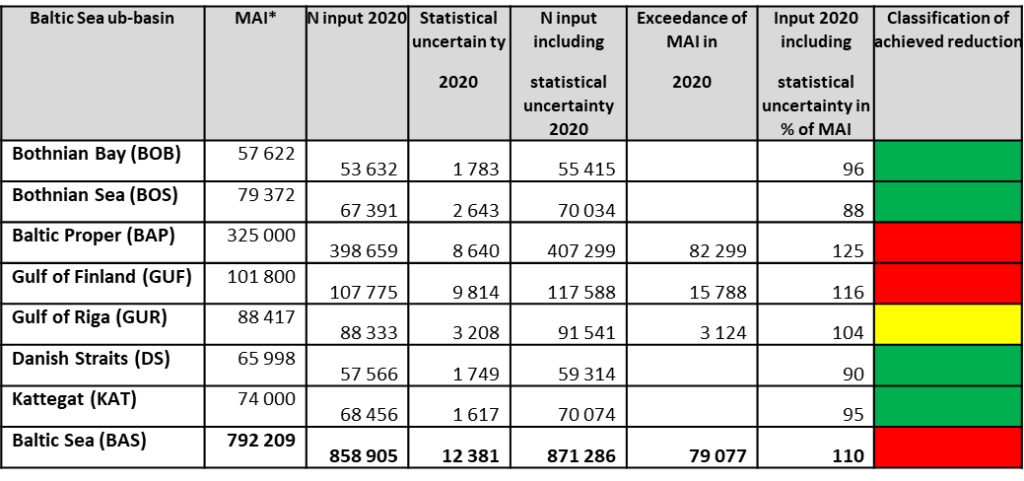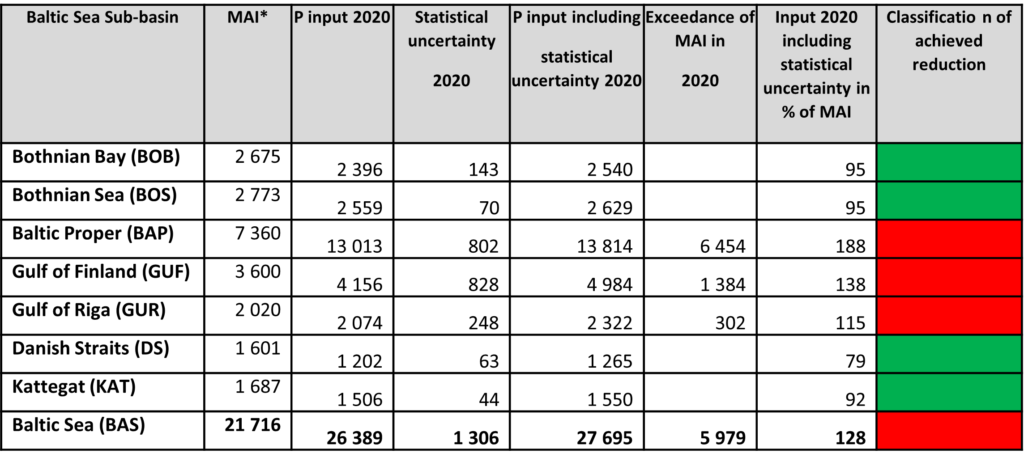Maximum allowable inputs
Maximum allowable inputs (MAI) of nutrients indicate the maximum level of inputs of water and airborne nitrogen and phosphorus to the Baltic Sea sub-basins to reach good environmental status of the Baltic Sea.
The progress towards reaching MAI is tracked annually. The latest assessment was done in 2022 for the period 1995-2020.
Results table 1.
The trend-based estimate for normalized annual inputs of (a) nitrogen and (b) phosphorus during 2020.
The table also contains data on statistical uncertainty, the remaining reduction needed to reach MAI and inputs in 2020 including statistical uncertainty in percentages of MAI. Classification of achieving MAI is given in colours: green=MAI fulfilled, yellow= fulfilment is not determined due to statistical uncertainty, and red=MAI not fulfilled. (Units in columns 2-5: tonnes per year). NOTE: For consistency with MAI no rounding (to tenth, hundreds or thousands) has been performed in the indicator.
Nitrogen
Table 1a

Phosphorus
Table 1b

*As adopted by the 2013 HELCOM Copenhagen Ministerial Meeting and in BSAP update 2021
Key messages on progress towards MAI
- A significant reduction of nutrients input has been achieved for the whole Baltic Sea. The assessment shows that the normalized total input of nitrogen was reduced by 12% and phosphorus by 28% between the reference period (1997-2003) and 2020.
- The maximum allowable input (MAI) of nitrogen in this period was fulfilled in the Bothnian Bay, Bothnian Sea, Danish Straits and Kattegat.
- MAI for phosphorus input was also fulfilled in the Bothnian Bay, Bothnian Sea, Danish Straits and Kattegat.
- In the remaining sub-basin MAI was not fulfilled for either total nitrogen or for total phosphorus.
For more information: HELCOM core indicator on inputs of nutrients for period 1995-2020

